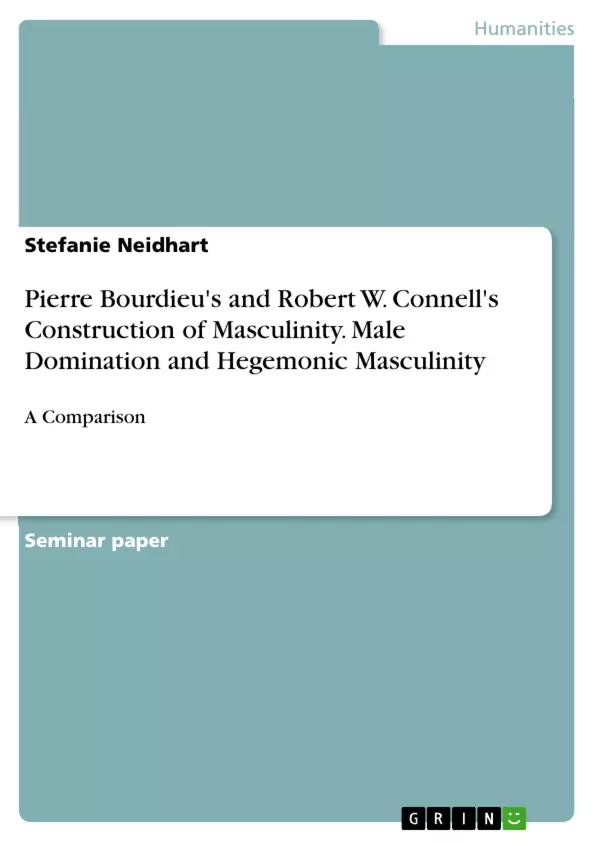This paper deals with the concepts of male domination by Pierre Bourdieu and hegemonic masculinity by Robert W. Connell. The background of the comparison presented here is based on the assumption of a connection between the theoretical perspectives.
The paper aims to clarify some central questions: How did male hegemony emerge or has been constructed? How were these structures able to secure their self-evidence and legitimacy over centuries? Why are patriarchal structures still ubiquitous today? How can the structures of male hegemony or male domination be changed or even ended?
In order to answer these questions, both concepts will be examined individually in terms of method and theory in the following, and then analysed together. In the last part of the paper, the concepts are critically examined, discussed and included in current references.
Inhaltsverzeichnis (Table of Contents)
- Introduction
- Construction of Masculinity – Bourdieu and Connell
- Pierre Bourdieu: Male rule
- Construction of body, incorporation of domination and masculinity
- Male habitus, male domination, violence and female complicity
- Robert W. Connell: Hegemonic masculinity
- Social construction of gender and masculinity
- Pierre Bourdieu: Male rule
- Comparison and summary
- Criticism, reference and discussion
- Conclusion
Zielsetzung und Themenschwerpunkte (Objectives and Key Themes)
This work explores the social construction of masculinity and its impact on gender inequalities. It examines the concepts of male rule by Pierre Bourdieu and hegemonic masculinity by Robert W. Connell, comparing and contrasting their theoretical perspectives.
- The social construction of gender and its role in shaping societal norms and practices
- The concept of male rule and its influence on the dominance of men in various social spheres
- The dynamics of male domination and how it is perpetuated through social structures and individual habitus
- The role of symbolic violence in maintaining male dominance
- The need to critically examine and challenge patriarchal structures
Zusammenfassung der Kapitel (Chapter Summaries)
- Introduction: This chapter introduces the central theme of the work – the social construction of masculinity. It emphasizes that masculinity is not a natural phenomenon but rather a product of social practices and norms. The chapter also highlights the importance of understanding gender as a key dimension of social disparities.
- Construction of Masculinity – Bourdieu and Connell: This chapter delves into the theoretical perspectives of Pierre Bourdieu and Robert W. Connell on the construction of masculinity. It explores Bourdieu's concept of male rule, which examines how male domination is ingrained in social structures and individual habitus. The chapter also discusses Connell's concept of hegemonic masculinity, which focuses on the dominance of specific forms of masculinity within a society.
Schlüsselwörter (Keywords)
The main keywords of this work are: social construction of gender, masculinity, male rule, hegemonic masculinity, habitus, symbolic violence, patriarchal structures, gender inequality, and social disparities.
- Quote paper
- Stefanie Neidhart (Author), 2011, Pierre Bourdieu's and Robert W. Connell's Construction of Masculinity. Male Domination and Hegemonic Masculinity, Munich, GRIN Verlag, https://www.grin.com/document/1156939



